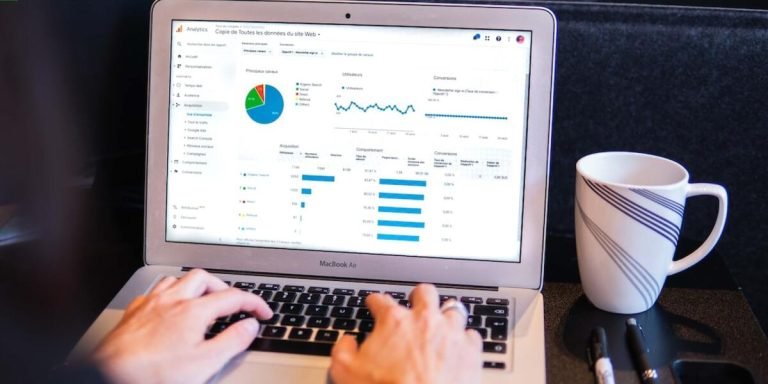LMS Technology: A Comprehensive Guide for Parents and Educators
In the rapidly evolving educational landscape, one tool has become increasingly vital – LMS technology. Standing for Learning Management Systems, this advanced software is transforming the way children learn and educators teach in today’s digital age. While it may seem complex on first glance, understanding its potential can make a significant difference in your child or student’s academic journey.
This guide aims to illuminate what LMS technology encompasses, how it integrates into everyday education and why parents and educators should embrace these advances with open arms. With an intricate blend of online learning tools at our disposal from quizzes to video tutorials and collaborative projects – there’s more than meets the eye within each user-friendly dashboard.
Did you know?
Did you know? In a 2020 report, education technology market research firm Metaari revealed that the global Learning Management System (LMS) market will surpass $25.7 billion in revenues by 2025 – heralding an increase as schools continue embracing digital learning.
Understanding LMS Technology in the Educational Landscape
The rapid evolution of digital technology has fundamentally transformed the education sector. One such major shift is sparked by Learning Management Systems (LMS), which are now at the forefront of progressive learning strategies across all levels, from kindergarten to higher education.
An LMS provides a framework that facilitates planning, delivering and managing educational paths in an integrated system with features for educators and students alike. It transforms traditional classroom teaching into digital or blended formats effectively bringing classrooms within reach right through laptops or mobile screens.
This technological advancement takes learning beyond physical boundaries allowing uninterrupted access to study materials anytime, anywhere. Moreover, it also equips teachers with tools like automated grading systems and plagiarism detection software helping them navigate their way seamlessly in this technologically intensive landscape while greatly enhancing student engagement levels as well.
In today’s fast-paced world where lifelong learning is no longer just an option but a necessity – LMS comes off as a game-changer fostering innovation in how knowledge is imparted and consumed thus pushing forward Technology Integration in Education.
The Role of Learning Management Systems (LMS) in Modern Classrooms
In this digital era, Learning Management Systems (LMS) have become an integral part of modern classrooms. These powerful software solutions offer educators an effective way to create, deliver and manage their online learning courses while providing students a convenient platform for consuming course material.
One key facet of LMS technology is its ability to bridge the gap between traditional classroom teaching methods and today’s tech-savvy learners. By leveraging LMS tools, teachers can foster deeper engagement among the student community through immersive multimedia content such as videos, audio lectures or interactive quizzes.
From time management perspective also it simplifies tasks by automating administrative duties like grading assignments or tracking attendance – freeing up valuable teacher-time that can be redirected towards developing more enhanced lesson plans and instructional strategies instead of getting bogged down in paperwork.
Furthermore, with features like social networking integration, discussion forums or collaborative workspaces; these systems provide ample opportunities for peer interaction thereby enhancing cooperative learning experiences well beyond brick-and-mortar confines. It fosters inclusive education where every child irrespective of geographical barriers has equal opportunity at receiving quality instruction from anywhere globally 24/7 just via internet access on any device whether smartphone/tablet/computer/laptop etc., making knowledge truly democratic!
Advancing Pedagogy with LMS Features and Tools
The first stride towards understanding this integration involves recognizing the features and tools readily available with LMS.
1. Course Creation: Teachers can curate engaging courses using dynamic content formats like video, audio or interactive quizzes right under one roof – their exclusive digital classroom!
2. Student Tracking: This feature becomes invaluable for teachers as it enables them to track student progress regularly. Real-time analytics provide detailed insights on students’ strengths and areas needing attention — making personalised learning achievable.
3. Seamless Communication: One key benefit of lms technology is its facilitation of seamless communication between all parties involved – teachers, parents and learners alike! Whether it’s assigning homework tasks or announcing test dates, everything happens within just few clicks.
4. Digital Grading System: Automated grading systems remove manual errors ensuring fairer assessment results while saving time for busy educators.
5 Interactive Environment: Creating immersive classrooms leads to better engagement rates among young learners hence enhancing overall learning experiences drastically!
6 Content Accessibility & Portability : Materials are easily accessible at any given hour from multiple devices meaning students learn at their suitable pace regardless geography constraints .
and managing enrollments transform into breezy tasks thus freeing up educator’s valuable time .
Bridging Educational Gaps with Effective LMS Integration
In a rapidly evolving educational landscape, bridging the gap between teaching methodologies and technological advancements has become crucial. Borne out of this necessity is Learning Management System (LMS) technology – an effective tool designed to simplify education’s complex facets. LMS aids in consolidating various educational resources into one systematic platform enhancing educators’ ability to deliver comprehensive and qualitative learning.
Exposing students to LMS arguably heralds a revolutionary transformation in pedagogical methods. This technology integration facilitates personalized learning experiences tailored for individual learners by tracking their progress, analyzing strengths and weaknesses, suggesting appropriate resource materials, thereby ensuring better comprehension levels among young minds. In essence, integrating LMS directly correlates with enhanced student engagement – leading towards enriched knowledge retention rates.
Lastly, amidst 2023’s surfacing challenges like remote learning conditions due to worldwide pandemic scenarios or diverse classroom settings accommodating different learner categories simultaneously—LMS stands as a resilient solution providing seamless access over geographical boundaries while catering to various academic needs effectively on one single platform.
Customizing Learning Experiences through Adaptive LMS Technologies
Technology has become a catalyst for transforming education, and Learning Management System (LMS) technologies are at the forefront of this change. Customizing learning experiences through adaptive LMS technology is one major way to bridge educational gaps.
Adaptive LMS technologies empower educators by providing tools that allow for personalized instruction based on individual learner’s needs. This helps students who may not thrive in traditional teaching models find their own path to success. The use of “lms technology” profoundly changes how content is created, managed, and delivered across various platforms such as online classrooms, distance learning modules or blended training programs.
Incorporating adaptive LMS can lead to enhanced student engagement due its interactive nature – it follows an intuitive design where each step relies upon the previous ones allowing learners navigate seamlessly from simple topics to complex concepts over time. It also promotes accountability among users since they see real-time updates about their progress every step of the way.
Moreover, utilizing data-driven insights harnessed from these systems enable teachers identify strengths and weaknesses in understanding specific areas within subjects being taught making them more equipped towards building stronger instruction strategies tailored according each learner’s pace aptitude thus enhancing overall academic outcomes significantly.
To put simply: Integrating advanced lms technology into your school curriculum revolutionizes ways we seek help children learn better; breaking down barriers could prevent reaching full potential while benefiting holistic development mind personality alike!
Streamlining Administrative Tasks for Educators and Institutions
In today’s digital age, leveraging LMS (Learning Management System) technology to streamline administrative tasks has become a critical part of educational strategies. As we dive deeper into 2023, schools are increasingly using this tech-driven approach for effective education management.
Firstly, one vital aspect where LMS assists is in the reduction of manual paperwork. Educators often spend numerous hours creating lesson plans and grading assignments. By adopting LMS technology, these time-consuming processes can be automated or significantly reduced.
Plans can be uploaded onto the platform and updates made easily available to all students instantly.
Additionally, scheduling becomes hassle-free with an integrated calendar feature that allows both educators and learners easy access to their schedules at fingertips notice—an invaluable tool when managing multiple classes or activities concurrently.
Another prime area it addresses is communication enhancement between various entities involved: teachers-students-parents-administration alike. Instant notifications on student progress reports help monitor performance closely while enabling timely assistance as required—a boon particularly relevant considering busy parental lifestyles prevalent today.
Furthermore, handling vast data quantities regarding student performances does not need to consume expansive resources anymore—thanks again to our friend – ‘lms technology’. Advanced analytics offered by such solutions enable efficient tracking & analysis of individual learning paths across different parameters like attendance records or periodic test scores etc., aiding strategic decision-making capacities around pedagogical methods adopted suitably customized per learner needs accordingly—one step closer towards personalized education!
Evaluating the Impact of LMS Technology on Student Outcomes
In the sphere of childhood education, technological advancements have revolutionized strategies for teaching and learning—the integration of Learning Management Systems (LMS) is a testament to this. LMS technology provides an all-inclusive platform that lets educators create, manage and deliver educational content while making it easier for students to access course materials. This dynamic shift in pedagogical methods has allowed us to reevaluate student outcomes.
The positive influence of LMS technology on student outcomes is quite noteworthy. With such applications, children can grasp knowledge at their own pace—a blessing for slower learners who struggle to keep up with traditional classroom teaching styles. It allows them tailored learning experiences based on personal academic needs thus improving overall performance levels.
Moreover, LMS technology encourages active involvement from both teachers and parents alike—thanks largely due its data collection capability which monitors students’ progress over time—an essential tool when looking into individual strengths or areas needing improvement within a learner’s journey. The blend between physical classrooms adorned with chalkboards and digital ones buzzing with interactive quizzes paves way towards equipping our future generations better than ever before.
Enhancing Engagement and Retention Rates Through Interactive Course Design
The advent of LMS technology in education has revolutionized how students engage with their learning materials. In 2023, the most effective classrooms are no longer defined by four walls, but rather by digital platforms that foster interactive course design.
One primary advantage is this type of approach enhances user engagement. An engaging course can spark curiosity and drive interest among students – key factors to maintaining student attendance rates even in an online setting. When courses involve more than just passive reading; for instance through quizzes or discussion forums facilitated by LMS technology, it allows students to play a more participatory role and remain invested throughout the duration of the subject matter.
Beyond keeping attention piqued, comprehensive use of interactive elements within course designs also significantly impacts retention rates. Making information available across various formats caters to different types of learners — auditory, visual or kinesthetic as some examples — facilitating greater comprehension resulting from personalized learning experiences.
Moreover, real-time feedback mechanisms embedded into these systems allow instant evaluation which promotes continuity in progress while reducing gaps in understanding before they manifest as performance issues later on.
However successful integration isn’t merely about buying access to software but involves being strategic regarding its implementation at every stage starting from curriculum planning right up till assessment delivery methods centralizing around learner needs first.
Assessing Improved Academic Performance Driven by Data Analytics Features
Today’s educational landscape is morphing rapidly with the integration of Learning Management Systems (LMS) technology. The influence of this technological innovation has been especially transformative in data-driven improvements to student performance outcomes.
One significant advantage that LMS offers is its robust analytics features, which are reshaping academic assessment methods and tools. Insights gained from these systems offer educators a comprehensive view of each student’s progress, helping them pinpoint areas where students might need additional support or resources.
Evidently, advanced algorithms built into modern LMS applications allow for continuous monitoring of multiple facets related to learner engagement – from their online activity patterns and test scores to participation in virtual discussions and submission timelines. This wealth of information helps teachers better understand how effectively different learning materials are being utilized by individual learners.
Moreover, utilizing data analytic features can help identify trends over time. For instance, analyzing results before and after implementing changes will provide valuable insights on whether those measures have improved academic performance as intended – hence creating room for evidence-backed modifications tailored towards optimizing educational experiences for students.
Admittedly though, even among enthusiastic proponents promoting ‘technology integration in education’, some concerns exist surrounding privacy issues resulting from detailed tracking potentialities inherent within such platforms’ vast data mining capabilities . However , defenders argue that stringent regulations along with strict implementation there-of should be able to assuage most if not all such worries .
Conclusion
In the ever-evolving world of education, embracing LMS technology can be a game-changer. Not only does it provide an organized structure for learning materials, but it also offers numerous interactive features that make learning enjoyable and engaging for children. However, as with any other tool, its effectiveness ultimately depends on how well parents and educators use it.
By now you should have a sturdy understanding of what LMS technology involves. Yet remember this is just one facet in the grand arena of childhood education. We encourage you to explore our website further; we’ve got a plethora of articles packed with insights on myriad topics related to educating kids and supporting both parents and educators alike in their journeys.
Dive deeper into these resources – knowledge after all never stops accumulating!







